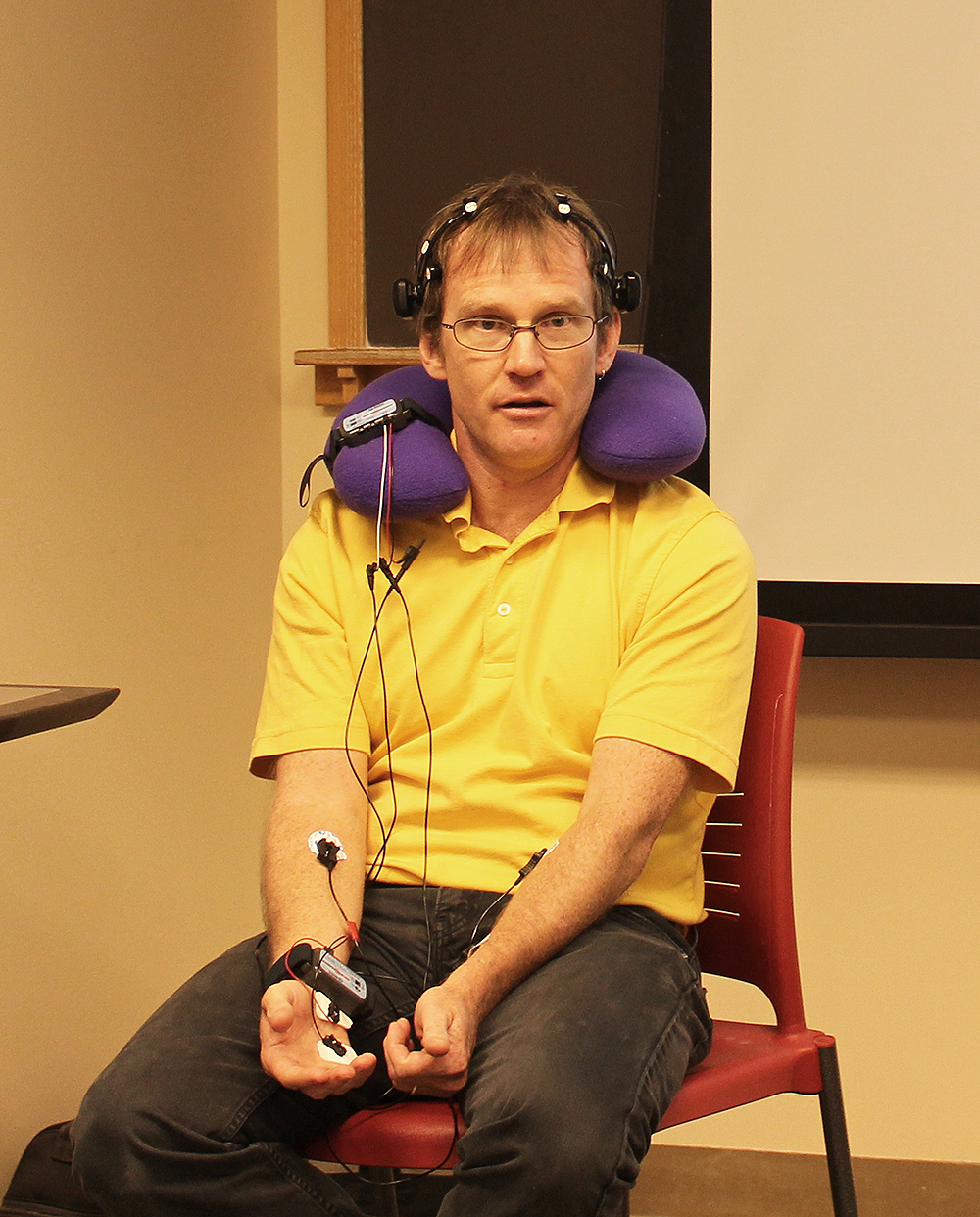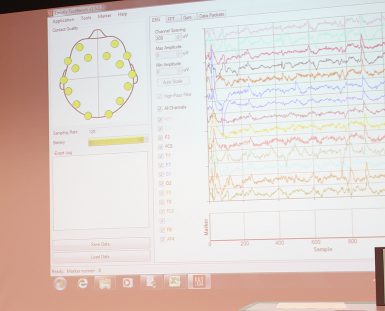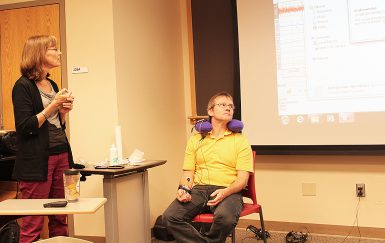Institute for Communication Research offers tools, support

On a recent Friday, associate professor Rob Potter sat in front of an audience wearing a headset, wired to his head and wrists, that tested his brainwaves and showed the results on-screen for all to see.
Potter played guinea pig during a Sept. 26 session at Radio-TV to demonstrate some of the tools and services available through the Institute for Communication Research, a telecommunications program now part of The Media School.
Potter is director of the ICR, which was founded in 1974 to facilitate research by providing equipment and support. For the show-and-tell, Potter, lab manager Sharon Mayell and doctoral student Anthony Almond unveiled new equipment and software to an audience of about a dozen grad students and faculty.
“Part of the College’s commitment to communication research has been to add some new tools that some researchers may not be aware we have,” Potter said. “We are trying to demonstrate the new capabilities we have for them to answer research questions about media and how people are affected by or process it.”

For example, the headset Potter demonstrated is part of a new hardware/software package, Biopac. Mayell hooked up Potter’s headset, which tested his heart rate and facial muscle response while he watched various forms of media.
“These types of tools can help us measure things like attention, perception, emotion, motivation and attitudes,” Mayell said. Bringing the equipment to the session was a way of introducing their uses to researchers who could benefit.
About the Institute for Communication Research
Joshua Sites, graduate student, The Media School
So right now, the participant in there is listening to music, and we’ve given him our laptop, and he’s able to do homework or Facebook or whatever he wants to do for about 40 minutes.
A college student is shown in a chair with several wires attached to him. There are close-ups of wires on his arm and foot. Joshua is shown attaching a wire to his forehead.
After that, we’re going to ask him to kind of reflect on the music that he’s heard and play parts of it to again. We’ll ask: How does this make you feel? Do you like this? And he’s hooked up to every measure in the book right now.
Rob Potter, Director, Institute for Communication Research
The data suggests that if you’re just sitting there listening to a radio station, and that radio station plays a jingle, that if you repeat those multiple times that by the end of the third or fourth repetition, it doesn’t automatically capture your attention like it does early on and like we would expect it to quite honestly.
The same test subject is shown listening to music and looking at a computer.
So what we’re looking at now is if you listen to the radio in the background while you’re studying for your media history exam coming up, do we see the same effect or when it’s in the background, do we in fact see something different, so that’s what we’re looking at now .
Joshua is typing on the research subject’s computer. He fiddles with measurements on the subject’s forehead and various measuring devices.
To me, what’s most interesting about the lab and psychophysiological measures in general is you can devise the most brilliant survey questionnaire tool ever conceived and ask people every which way: How did you feel about this or how you feel about that and and they will answer you as honestly as they can, and that data is incredibly valuable, but it doesn’t necessarily capture the whole picture.
A computer screen measuring the research subject is shown. Various levels of whatever is being measured are shown changing.
And so that’s what we’re able to do here. It helps us learn more about some deeper level processes than just what survey or questionnaires can get at.
Produced by Bronson DeLeon
The group also showed new software, such as Qualtrics, which replaces a previous program, Survey Monkey. Potter showed the program online and explored the uses of the online data collection, the way it imports images and provides website feedback.
Almond, a Ph.D. telecommunications student, presented two software platforms, Media Lab and Direct RT. These programs allow researchers to design questionnaires, experiments and surveys, measure psychological factors and conduct content analysis about the media.

“We are going forward with the research component with the new Media School,” Mayell said. “All the researchers in the Media School will have access to these and may incorporate some of these tools into their research.”
The Institute for Communication Research is located in Eigenmann Hall, but eventually will relocate to Franklin Hall when The Media School moves there in 2016. In the meantime, Potter said he hopes researchers will take advantage of the tools and support the ICR offers.
“These are types of measures that media companies like The New York Times, Nielsen, and Proctor and Gamble are using to figure out how people respond to products and advertisements,” Potter said. “We have that capability and we want to show it off.”

